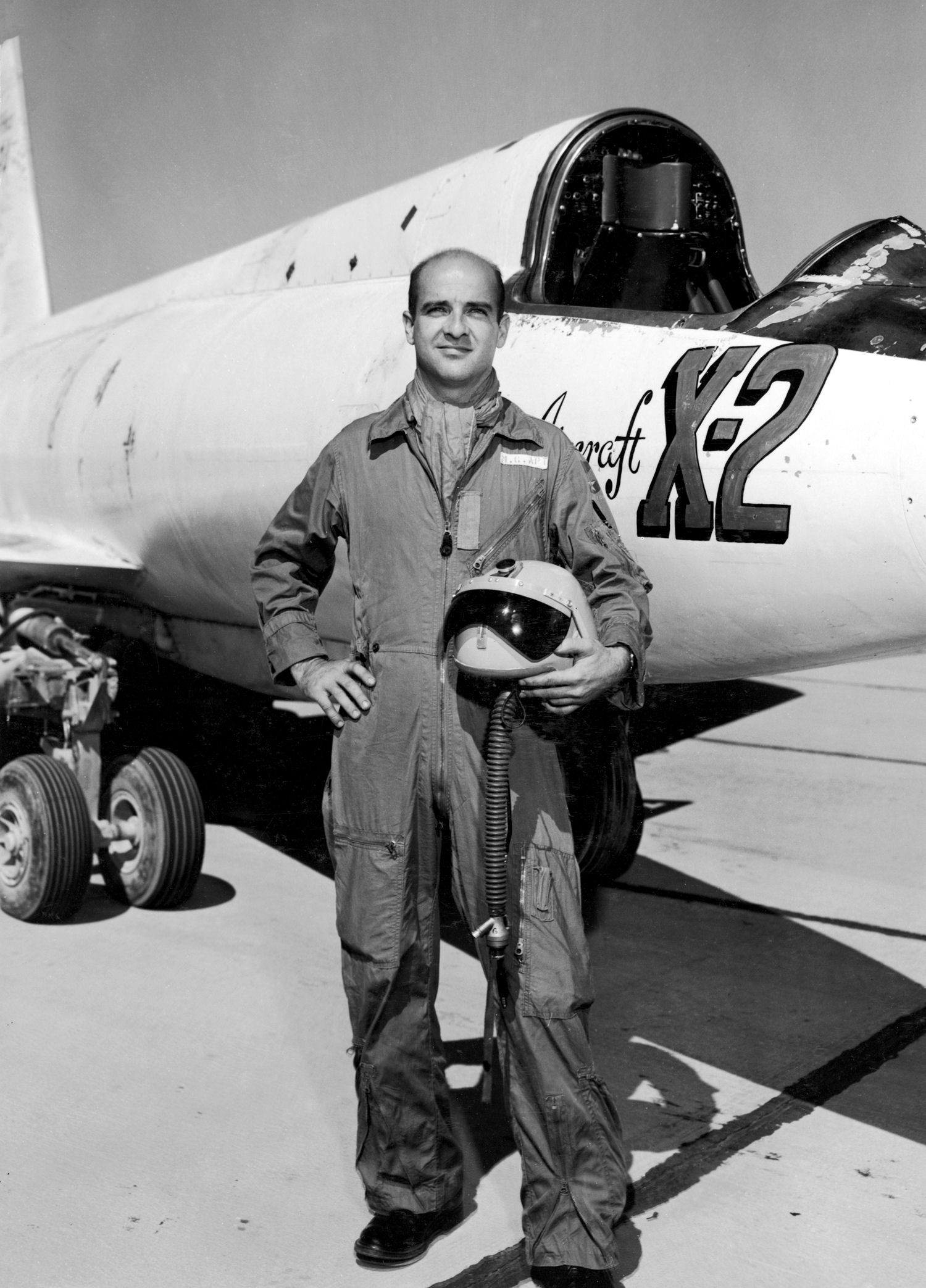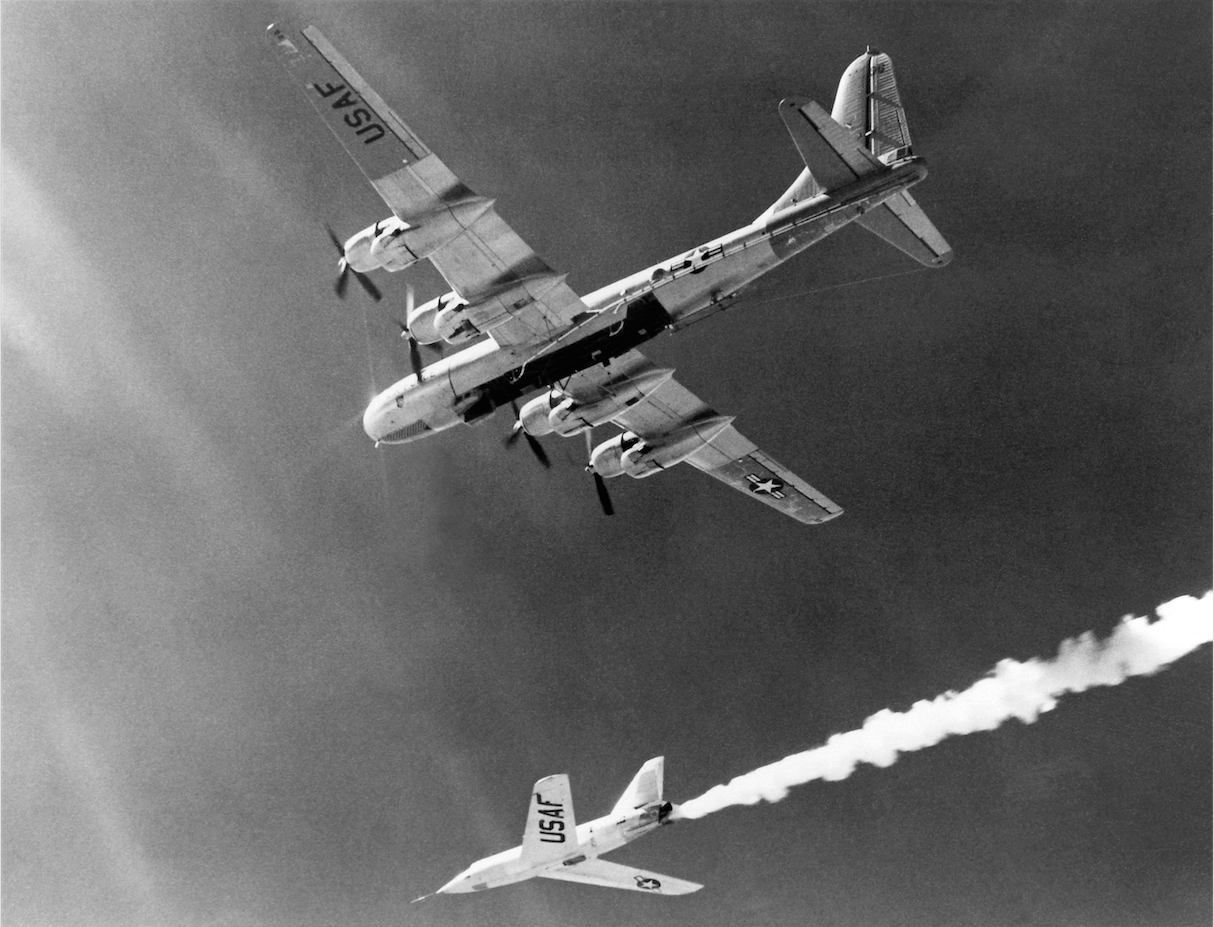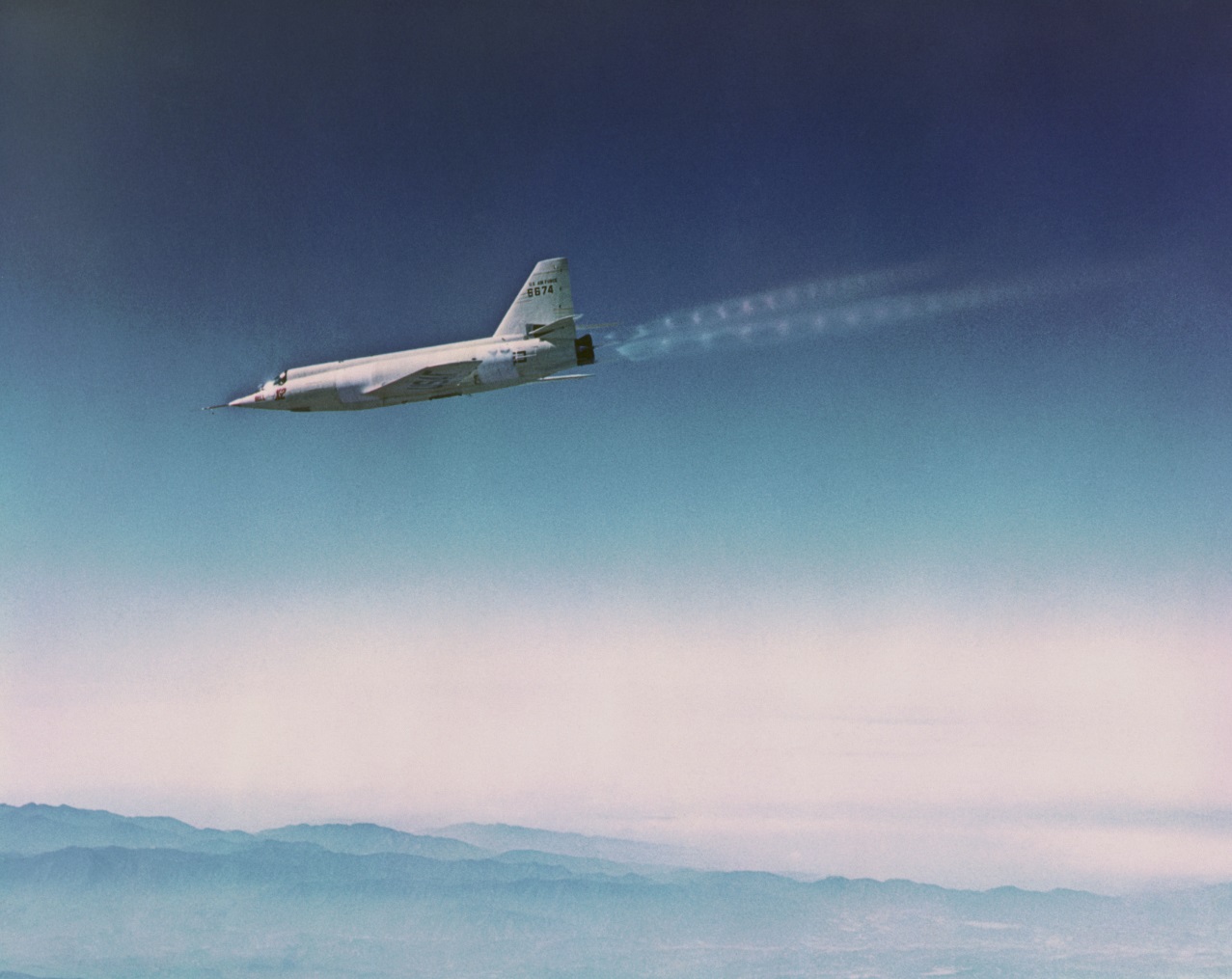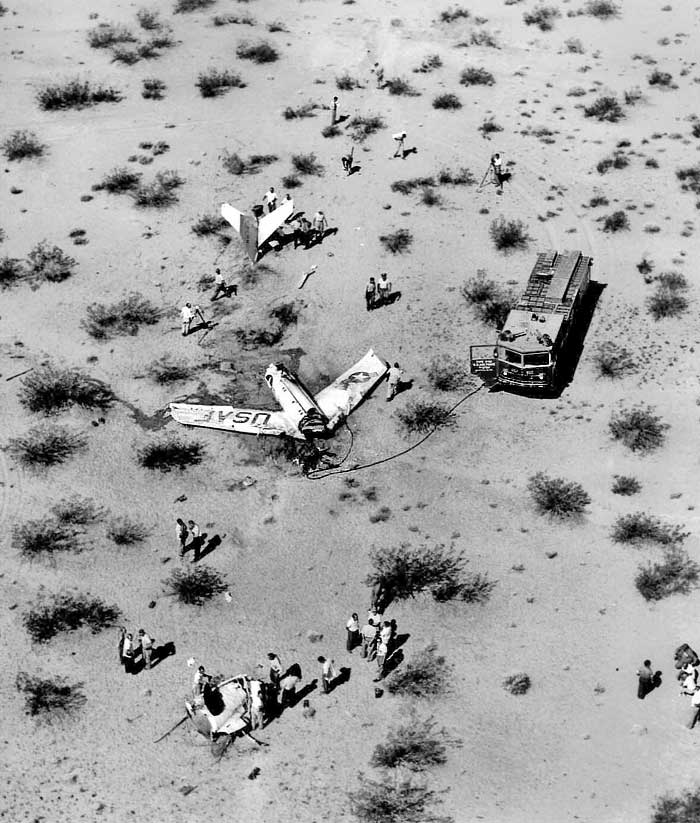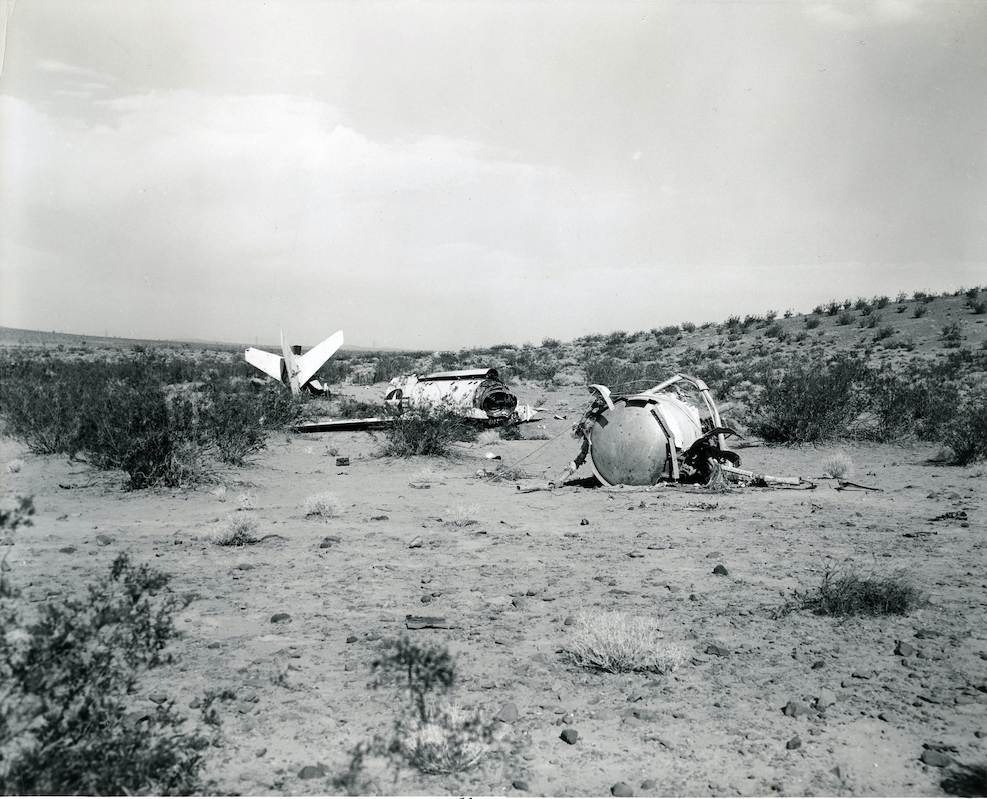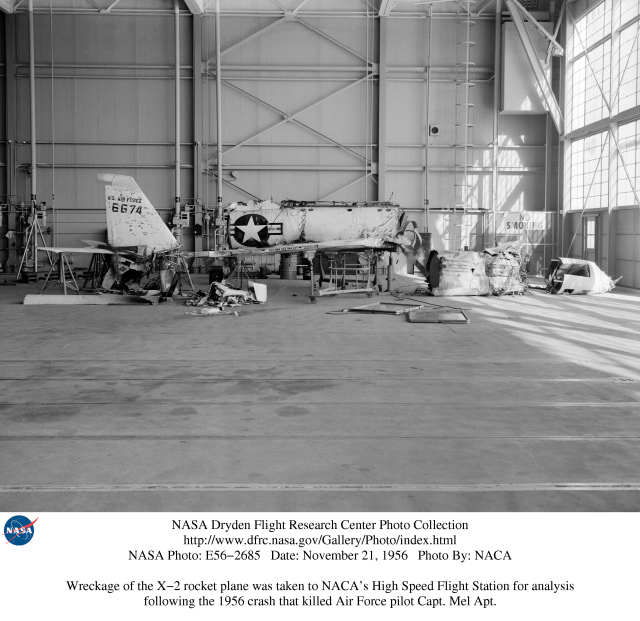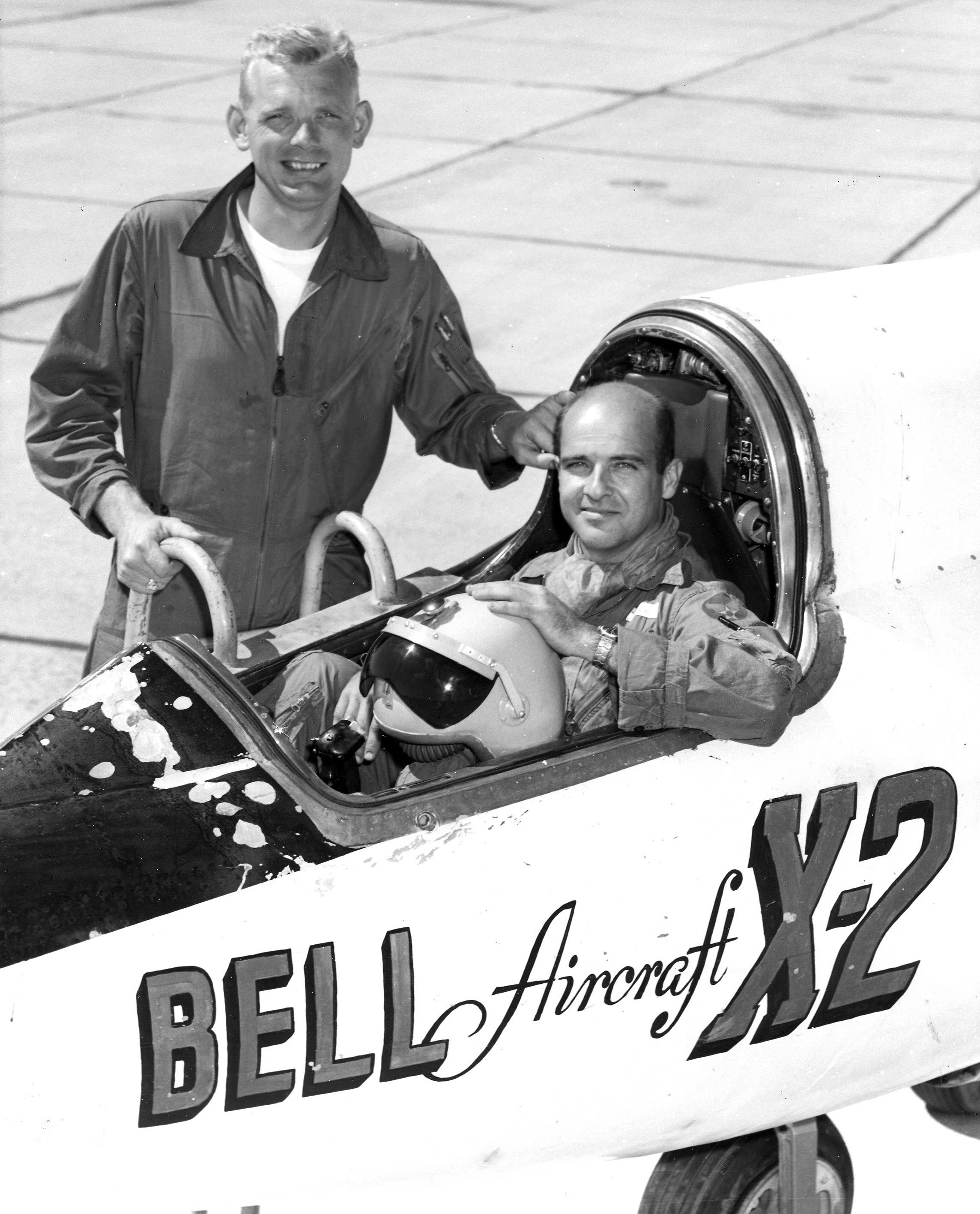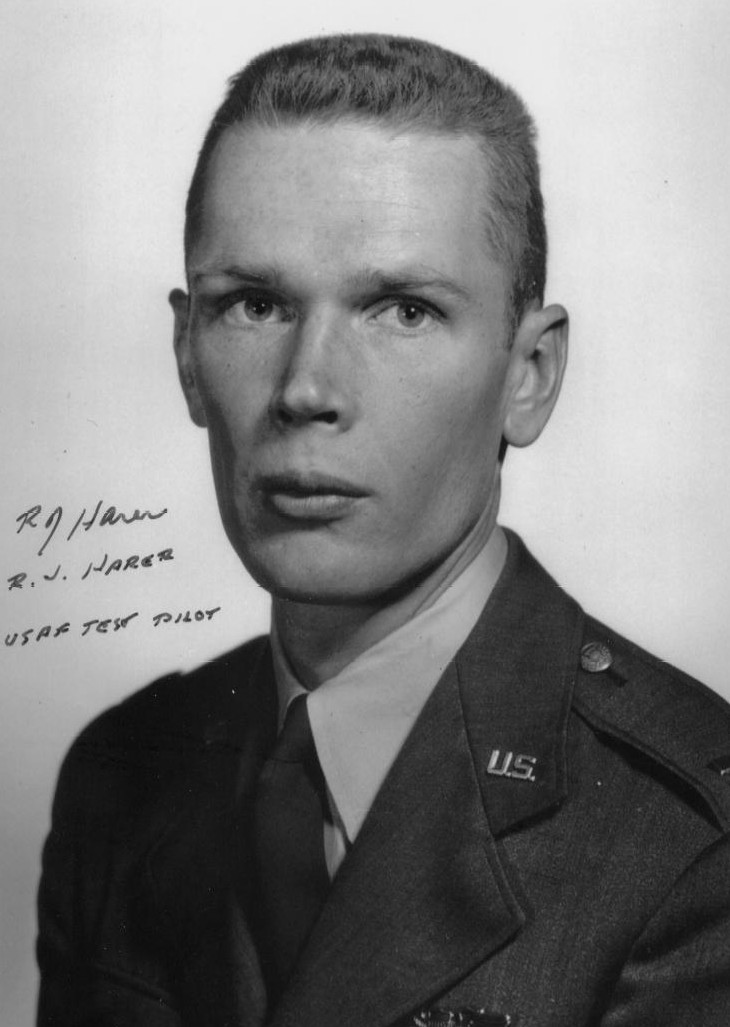
22 December 1954: At Edwards Air Force Base in the high desert of southern California, test pilot Captain Richard James Harer was flying a Lockheed F-94C-1-LO Starfire, serial number 50-962.¹ Harer was accompanied by fellow test pilot Captain Milburn G. Apt in a chase plane.
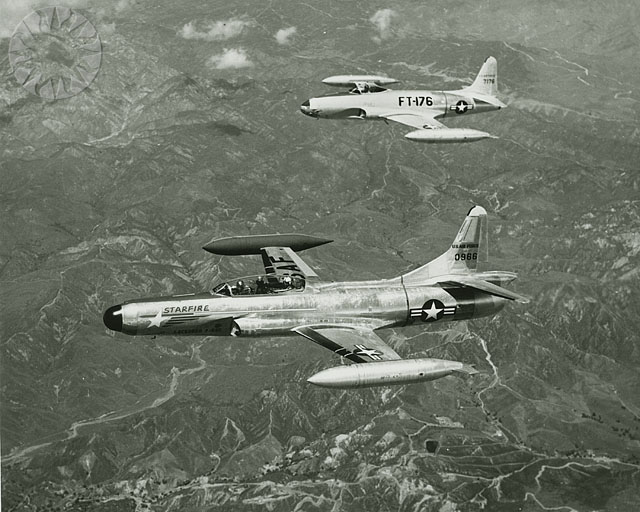
The Lockheed F-94 was the first U.S. production fighter aircraft to be equipped with a drag chute to provide aerodynamic braking on landing. (Drag chutes had been in use on larger aircraft since the 1930s.) There was speculation that the sudden deceleration provided by a drag chute might be useful during air-to-air combat.
Captain Harer’s test flight was to determine what would happen when the drag chute opened while the airplane was traveling at 600 miles per hour (96 kilometers per hour).
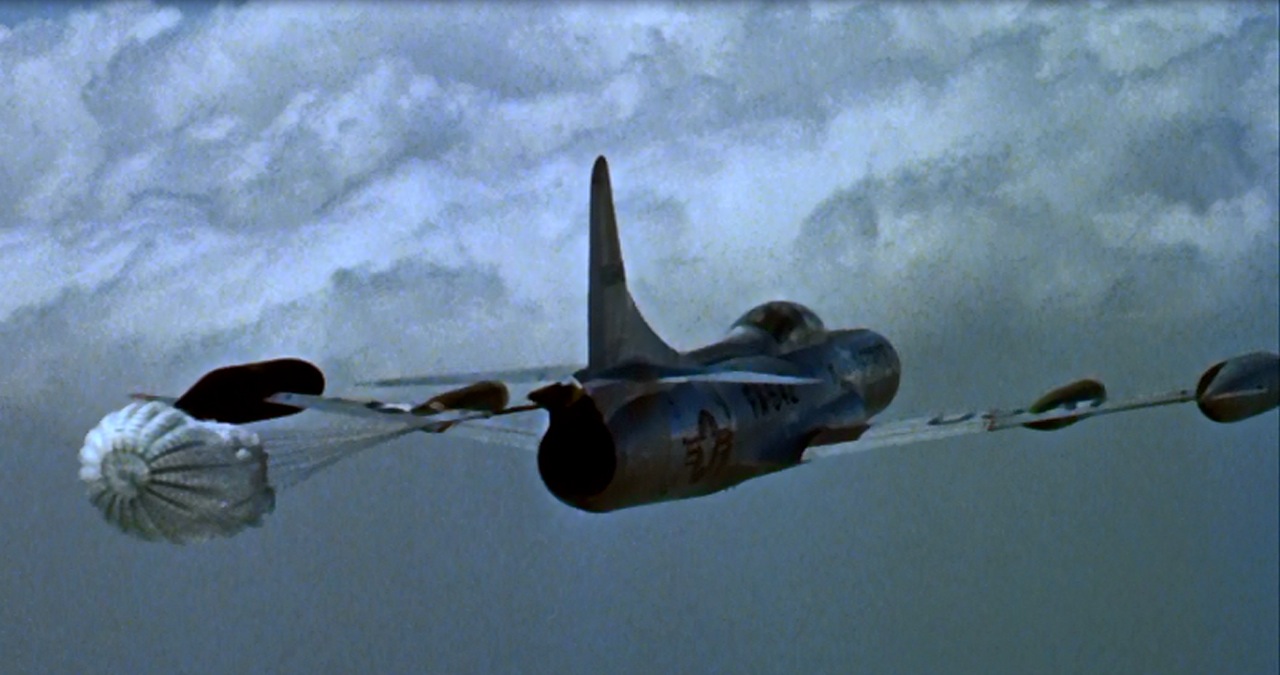
LIFE Magazine described the test in the following excerpt:
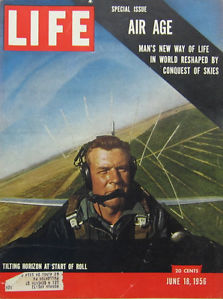 . . . A captain named Richard J. Harer was assigned to make the test in an F-94C, capable of flying 600 miles an hour. The plane was equipped with a manual release, so Harer could get rid of the parachute after the test. In the event that the manual release failed, Harer could get rid of the parachute by detonating a small explosive charge which was wired to the rope that secured the parachute to the plane. If both of these devices failed, Harer could still get rid of the parachute by going into a dive and maneuvering the parachute into the blast of flame from his afterburner. In sum, a thoughtful arrangement of affairs. Harer got into his plane and took it up to 20,000 feet, closely followed by a chase aircraft flown by another captain named Milburn Apt. Harer opened the parachute, began to tumble crazily across the sky and then—as far as anyone knows—must have tried the manual release. It failed. Then, because he was a cool, skillful pilot, Harer must have kept his head and tried the explosive charge, although no one is sure what he did. In any case, the charge did not explode. By this time Harer was plummeting out of control toward the dry lake bed at perhaps 500 miles an hour, with Captain Apt flying right beside him shouting advice over the radio. Harer’s plane continued down, wallowing, gyrating, the deadly parachute never quite getting into the flame of the afterburner. Harer crashed. His plane burst into flames.
. . . A captain named Richard J. Harer was assigned to make the test in an F-94C, capable of flying 600 miles an hour. The plane was equipped with a manual release, so Harer could get rid of the parachute after the test. In the event that the manual release failed, Harer could get rid of the parachute by detonating a small explosive charge which was wired to the rope that secured the parachute to the plane. If both of these devices failed, Harer could still get rid of the parachute by going into a dive and maneuvering the parachute into the blast of flame from his afterburner. In sum, a thoughtful arrangement of affairs. Harer got into his plane and took it up to 20,000 feet, closely followed by a chase aircraft flown by another captain named Milburn Apt. Harer opened the parachute, began to tumble crazily across the sky and then—as far as anyone knows—must have tried the manual release. It failed. Then, because he was a cool, skillful pilot, Harer must have kept his head and tried the explosive charge, although no one is sure what he did. In any case, the charge did not explode. By this time Harer was plummeting out of control toward the dry lake bed at perhaps 500 miles an hour, with Captain Apt flying right beside him shouting advice over the radio. Harer’s plane continued down, wallowing, gyrating, the deadly parachute never quite getting into the flame of the afterburner. Harer crashed. His plane burst into flames.
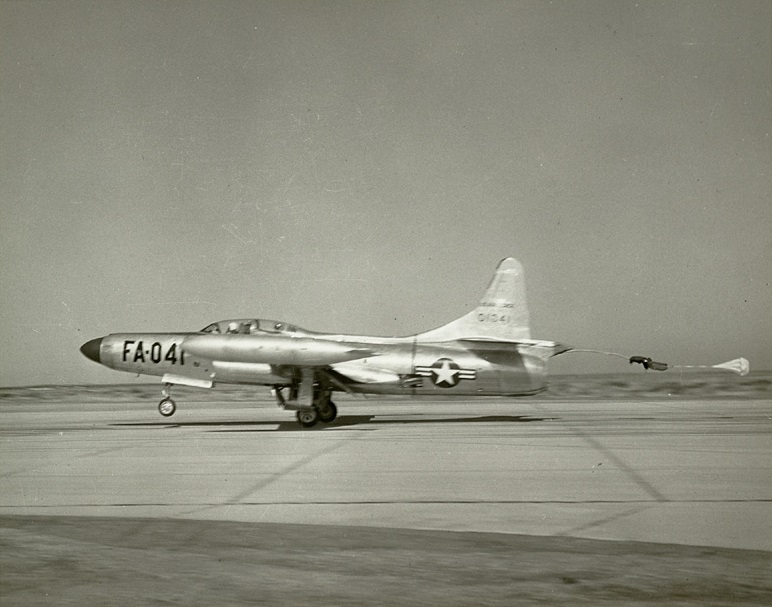
Captain Apt landed on the lake bed at almost the instant of the crash. The two planes, one burning, one under control, skidded along beside each other. As soon as he came to a halt, Apt leaped out of his plane and ran over to Harer’s. “It was nothing but fire,” Apt remembers. “The only part of the plane I could see sticking out of the flames was the tip of the tail.”
Apt dashed around to the other side of Harer’s plane. Strangely, this side was not burning. Apt was able to climb up onto the plane and look through the Plexiglas canopy into the cockpit. It was filled with smoke, but he could see Harer inside, feebly, faintly moving his head. Apt grabbed the canopy release, a device on the outside of the plane designed for just such and emergency. It failed.
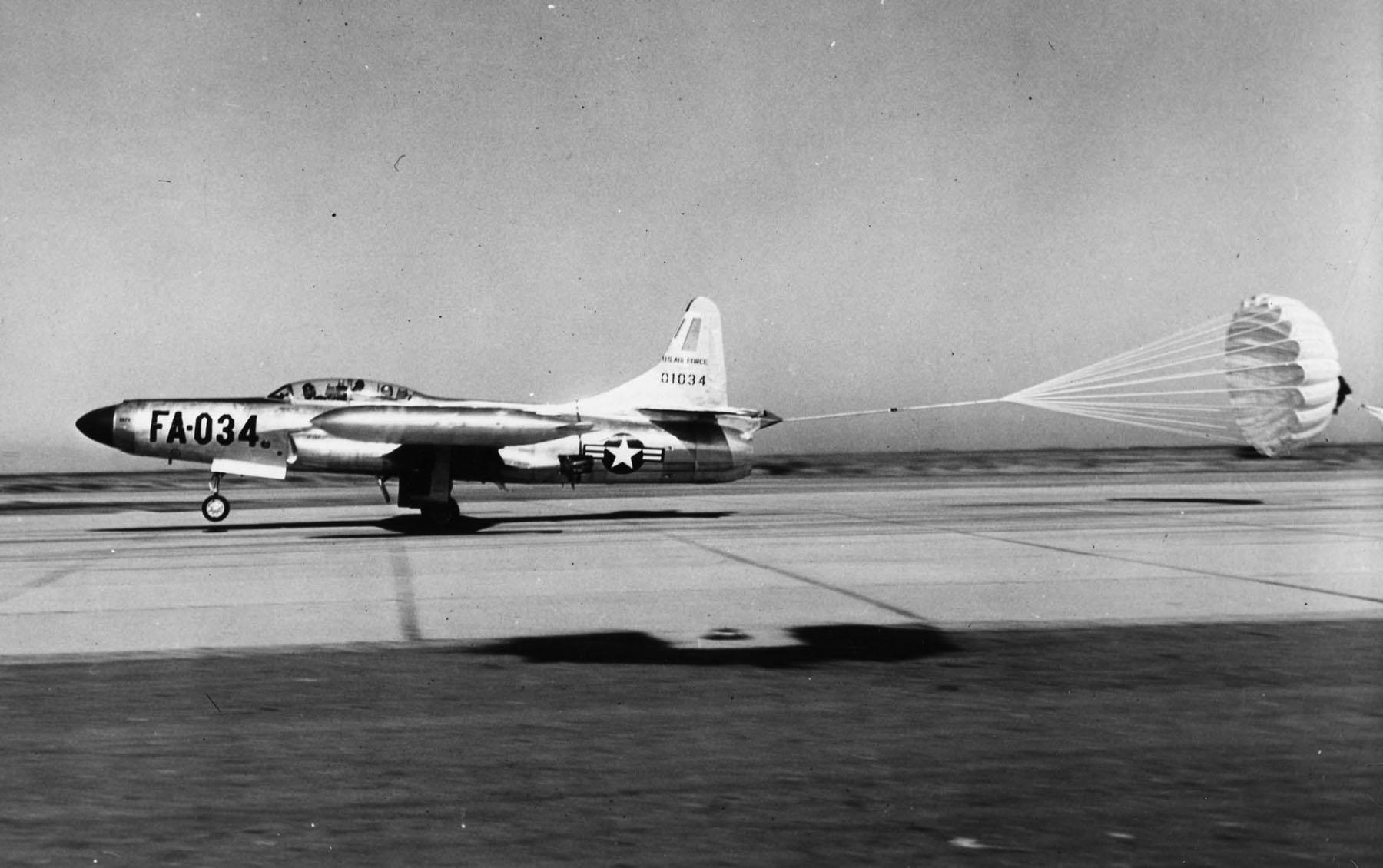
The dry lake bed has absolutely nothing on its surface except the fine-grained sand of which it is composed. No sticks, no stones, nothing that Apt might have picked up to smash the canopy. He tried to pry it off with his bare hands, an effort that, had it not been for the circumstances, would have been ludicrous. He smashed it with his fists and succeeded only in injuring himself. Meanwhile he could see Harer inside, the fire beginning to get to him now.

As Captain Apt smashed his fists on the canopy, a single jeep raced across the lake bed toward the plane at 70 miles an hour. Reaching the plane, the driver leaped out and ran over to it, carrying the only useful piece of equipment he had: a five-pound brass fire extinguisher, the size of a rolling pin. He could as well have tried to put out the fire by spitting on it. Apt and the jeep driver shouted contradictory instructions at each other above the growing roar of the fire. The jeep driver emptied his extinguisher on the forward part of the plane, then handed the empty container to Apt. Apt raised it above his head and smashed it down on the canopy. It bounced off. He pounded the canopy again and again, as hard as he could, and each time the extinguisher bounced off. “It was like hitting a big spring,” he says forlornly. “I couldn’t break it.”
Meanwhile, 9,950 men on the base quietly pursued their jobs, unaware of the accident. The obstetrician said, “Come back Thursday, Mrs. Smith,” Robert Hawn worked on his YAPS, and Smith, Douglas S., changed a tire. The only immediate spectators, aside from Apt and the jeep driver, were the Joshua trees growing all along the edge of the lake bed, very old and mournful.
By this time Captain Harer’s flesh was on fire. The jeep driver dashed back to his vehicle and returned with a five-gallon gasoline can. “My God.” Apt thought. “No, no,” the jeep driver cried, “it’s full of water. It’s all right.”
Apt hefted the can, which weighed nearly 50 pounds. He raised it high in the air and smashed it down. The canopy cracked. Apt hit it again, opening a hole in it, letting out the smoke inside. In a few seconds he had broken a large jagged opening through which Harer could be pulled out. “It was a tough job,” Apt says. “Harer was a very tall man.” Was a tall man. Not is, but was.
“He’s not tall now,” Apt says. “Both his feet were burned off.” Captain Harer lived. Today, he gets around very well on his artificial feet. He has been promoted to major and will soon be honorably retired from the Air Force with a pension. He has no memory whatever of the accident. He recalls flying at 20,000 feet and popping open the parachute, and his next memory is of awakening in a hospital two weeks later. . . .
—Excerpted from “10,000 Men to a Plane,” LIFE Magazine, 18 June 1956.
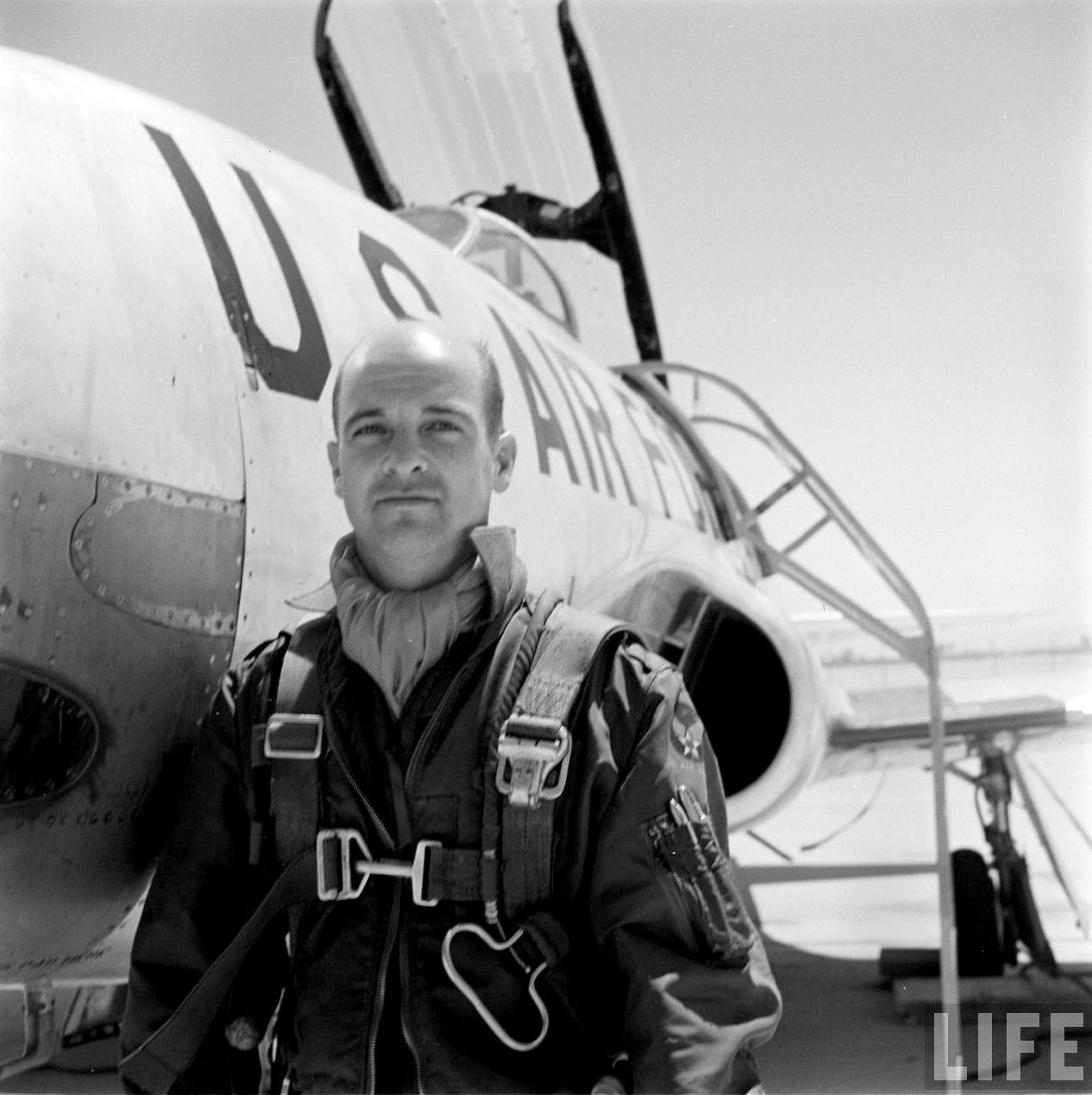
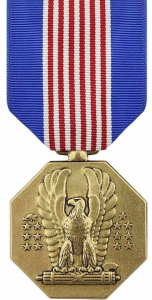
For his heroism in the face of great danger, Captain Mel Apt was awarded the Soldier’s Medal, the highest award for valor in a non-combat mission for Army and Air Force personnel. The regulation establishing the award states, “The performance must have involved personal hazard or danger and the voluntary risk of life under conditions not involving conflict with an armed enemy. Awards will not be made solely on the basis of having saved a life.”
Mel Apt would continue as a test pilot at Edwards Air Force Base, and on 26 September 1956, he would be the first pilot to exceed Mach 3 when he flew the Bell X-2 rocketplane to Mach 3.196 (2,094 miles per hour/3,377 kilometers per hour) at 65,589 feet (19,992 meters). Just seconds later, the X-2 began uncontrolled oscillations and came apart. Mel Apt was unable to escape from the cockpit and was killed when the X-2 hit the desert floor. He was the thirteenth test pilot to be killed at Edwards since 1950.
Richard James Harer was born at Painesville, Ohio, 8 October 1924. He was the son of Otto H. Harer, a foundry manager, and Edith Mynchenberg Harer. He had a younger sister, Marilyn.
Harer graduated from Harvey High School in Painesville in 1941. He was a member of the debate club and the Hi-Y club. (Harer’s father was president of the Painesville Board of Education.)
In 1942, Harer was a student at the University of Ohio. A member of the Class of 1945, he studied engineering and was a member of the Phi Eta Sigma (ΦΗΣ) fraternity.
World War II interrupted Harer’s education. On 4 December 1942, he enlisted as a private in the Air Corps Enlisted Reserve Corps. On 2 March 1943, Private Harer was selected as an Aviation Cadet and assigned to flight training. He was commissioned as a second lieutenant, Army of the United States (A.U.S.), 7 January 1944. On 6 November 1944, Harer was promoted to first lieutenant, A.U.S. On 25 September 1945, First Lieutenant Harer was transferred to the Air Corps Reserve. In 1947, the United States Air Force was established as a separate military service. Richard Harer was appointed a second lieutenant, U. S. Air Force, with his date of rank retroactive to 8 October 1945.
During World War II, Lieutenant Harer flew 31 combat missions in the European Theater of Operations. He was awarded the Distinguished Flying Cross, and the Air Medal with three oak leaf clusters.
Following the war, Richard Harer returned to his studies, now at the University of Toledo, Toledo, Ohio. He was a member of the Sigma Beta Phi (ΣΒΦ) fraternity, the American Society of Mechanical Engineers, and the Engine Club. He earned a master’s degree in mechanical engineering from the California Institute of Technology, and a second master’s degree in systems management from the University of Southern California.
On 21 January 1948, Lieutenant Harer married Miss Barbara Alice Heesen at Lucas, Ohio. They would have four children.
After graduating from the U.S. Air Force Test Pilot School, Captain Harer was assigned as a test pilot at the Air Force Flight Test Center, Edwards Air Force Base, California. He conducted performance testing on the Republic F-84F Thunderstreak. Harer flew an F-84F in the Bendix Trophy Race, 4 September 1954. He made one flight in the Bell X-1B rocketplane, 4 November 1954.
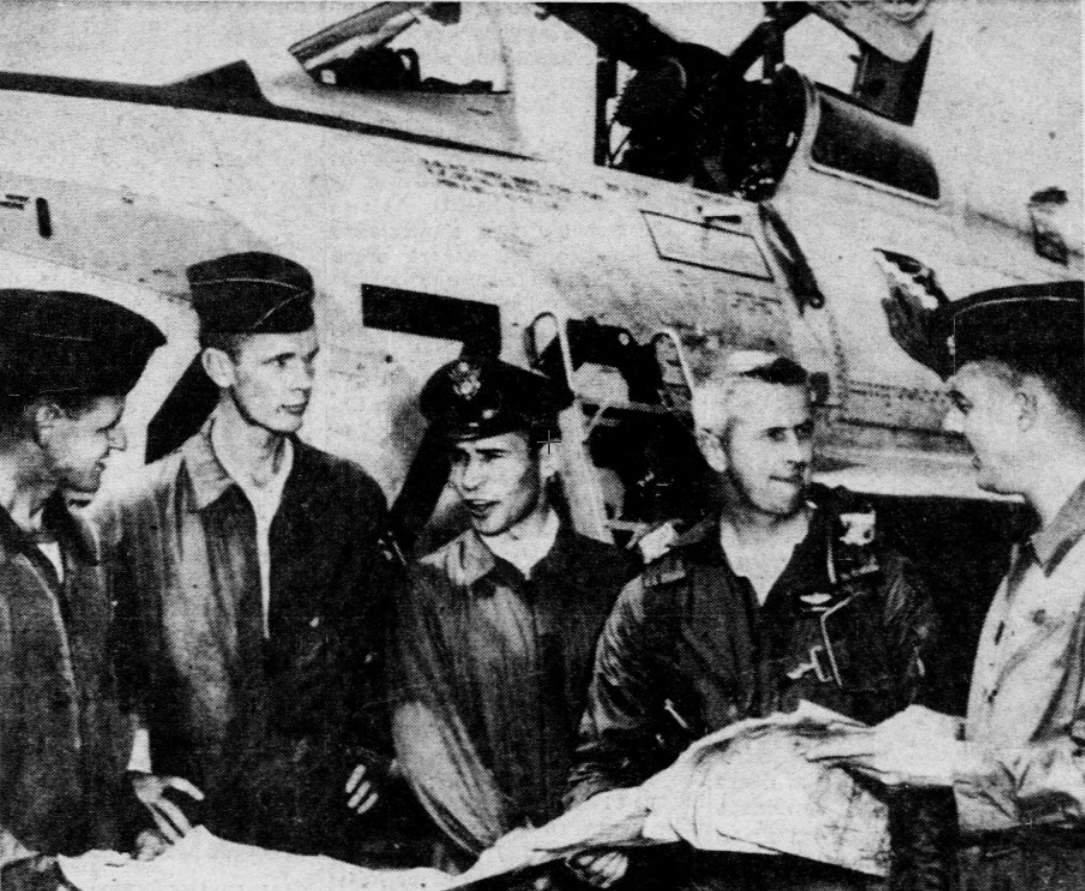
Richard James Harer died 20 November 2019 at the age of 95 years.
¹ Several sources list the U.S. Air Force serial number of the F-94C flown by Captain Harer as “50-692,” however that serial number is actually assigned to a Boeing C-97C-35-BO Stratofreighter four-engine medical transport. It is apparent that the numbers have been transposed.
© 2018, Bryan R. Swopes
